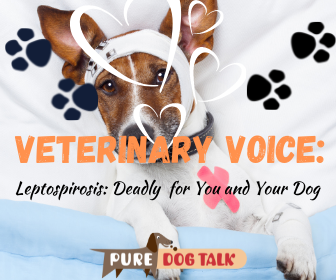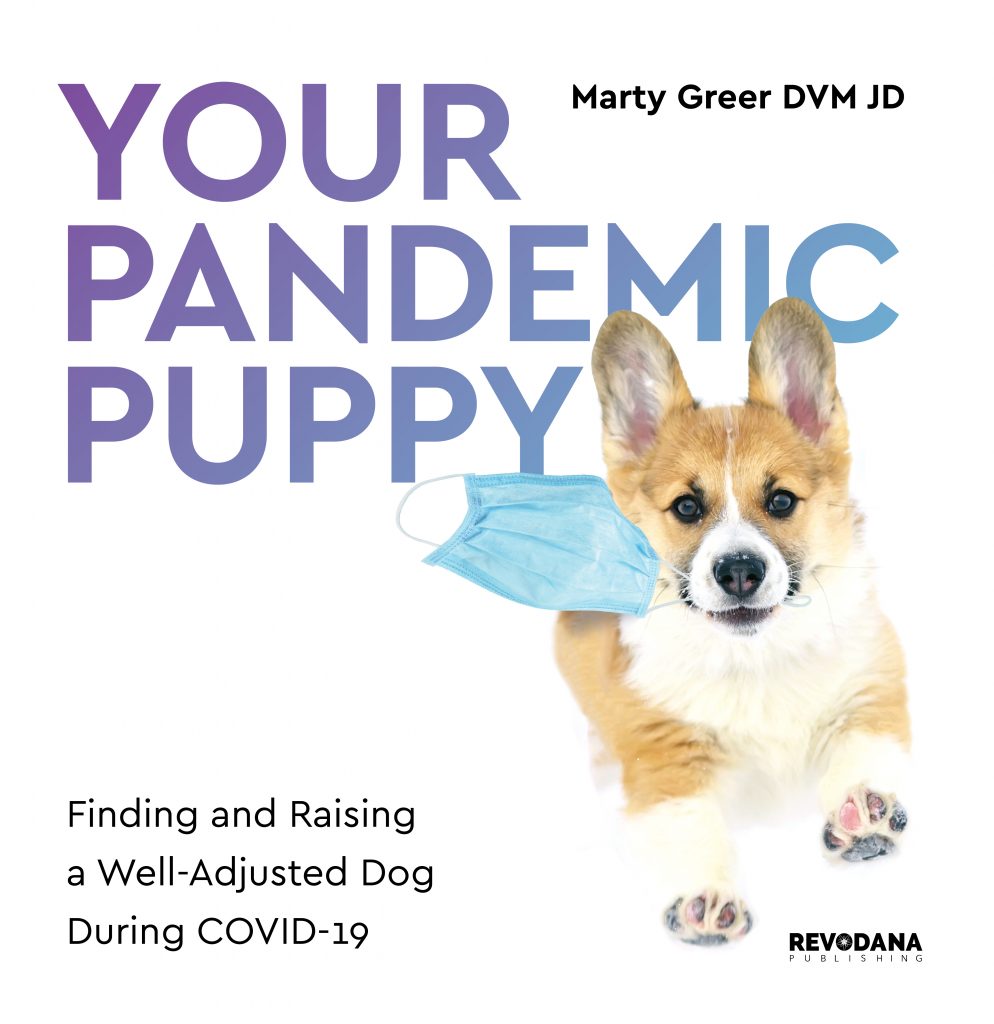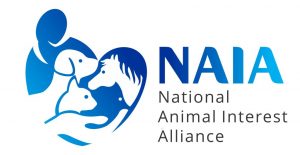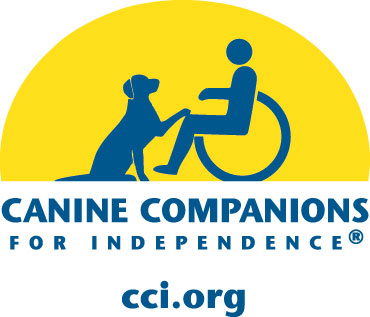493 – Leptospirosis: Deadly Disease for You and Your Dog
Leptospirosis: Deadly Disease for You and Your Dog
Dr. Marty Greer, DVM joins host Laura Reeves for deep dive and myth busting conversation about the dangers of the deadly leptospirosis infection in dogs AND humans.
“Years ago leptospirosis was in pretty significant disease,” Greer said. “And then we saw it kind of decline in frequency. Probably in the last decade or so. there’s been a reemerging of this disease. It’s a bacterial disease and there were some dogs that reacted to the lepto vaccine. If a dog was going to react to vaccine negatively it was probably either going to be lepto or coronavirus. So as a result, a lot of breeders started to drop that out of their vaccine protocols.
“However, we do see lepto in our practice on a fairly regular basis. It is most common in puppies under six months of age because their immune system isn’t as great yet. If you don’t look for lepto, you probably don’t see lepto.
“The recommendation is to not give leptospirosis vaccines to puppies under 12 weeks of age, because it tends to suppress their immune system and they have a more difficult time reacting to the other vaccines. About 12 weeks and older they should be vaccinated. It’s a series of two vaccinations, two to three weeks apart. We do recommend lepto for all the puppies in our practice unless the breeder has written into their contract not to do it.
“Unfortunately, there’s a fairly significant number of lepto cases that get undiagnosed. If you look through the list of symptoms, it’s extensive … it causes vomiting and diarrhea and cough and high liver enzymes and elevated kidney values and respiratory disease and eye disease, infertility. So, you can go right down the list and if you look at the symptoms, it’s anything that a dog can come in looking like.
Zoonotic impacts
Hawaii has the highest rates of human incidence of Leptospirosis infections, Greer noted.
“Think about the climate (in Hawaii). It’s moist, high humidity, alkaline soil. All of those factors contribute to leptospirosis being in the environment. The Midwest, southeastern states, of course, (are at higher risk).
“The more arid states like Arizona and New Mexico, California, those places tend not to have as much lepto because it’s drier. We most commonly see lepto about three to 18 months after significant flooding in an area. It spreads through the urine of infected animals, but it can also stay in the environment for an extended period of time.
“People do get lepto. There have been reports of people that work in kennels dying and farmers and veterinarians getting sick. So absolutely, positively humans can get lepto, either from their animals, their pets, from hospitalized patients or from livestock. There’s a lot of ways that people could be exposed to lepto. So if you have a possible exposure and you’re not feeling well, of course you need to let your veterinarian and your physician know.
Diagnosis
“There’s a blood test and there’s a urine test, and there is an antibody test and there’s a PCR test. So there are different ways to test depending on the symptoms that the dog is exhibiting and the stage of the disease. If the dog is recently infected and not yet on antibiotics, doing blood and urine PCR’s, where they actually look for the protein of the bacteria, is the most effective way to test.
“In a longer standing case, where the dogs have liver enzymes going up and kidney values going up, then you probably want to do a blood test, doing an antibody test. The best antibody test is done as two tests, three weeks apart. You do an acute titer and a convalescent titer looking for the titer to rise quickly over that three-week period of time.
Treatment
“(Do) not wait to put the dog on antibiotics. Baytril is not recommended. A lot of people reach for Baytril for serious infections, but it’s either amoxicillin, ampicillin or doxycycline that or the treatment of choice. They’re fairly long treatments. They are weeks of treatment to make sure that we’ve cleared not just the acute phase, but the carrier phase, where the dog would continue to shed the bacteria in the urine.”
451 – Pandemic Puppy: Inside Scoop on Marty Greer’s New Book
Pandemic Puppy: Inside Scoop on Marty Greer’s Timely New Book
Pure Dog Talk’s Veterinary Voice, Dr. Marty Greer, just released her newest book and joins host Laura Reeves to share the inside scoop, including how Laura knew about it from the beginning.
“At a time when we’re rethinking almost everything in our lives, Your Pandemic Puppy will recalibrate your concept of puppy rearing and dog ownership. Up to date, contemporaneous and thoughtful, Your Pandemic Puppy was written by a veterinarian with four decades of medical experience. In these pages, you’ll find information on all aspects of your new puppy’s physical and mental well-being, from the challenges of finding a new companion during the current COVID-19 crisis, through training and medical care.
“But more than just how-to advice, this book also explores what owning a puppy means to a family, and what to anticipate in the future, when you return to your former work and school schedule. This book is intended to help you have a great experience all along the way, from selecting your new puppy through adolescence. Having a new puppy or dog should be lots of fun: Here’s to making that your new normal.”
“Back in March or April my travel got curtailed,” Greer said “… and we were in our veterinary clinic only allowed to see sick patients, we weren’t allowed to do any routine spay-neuters or routine vaccinations… that significantly changed our flow of patient care …
“So I thought, well, you know, I’ve got a little time on my hands … I need to rewrite the puppy materials that we use in our exam rooms. So I’m gonna write a little 20 page doc to add a little booklet that we can use for our clients. It needs to be updated. Flea and tick medications are new and vaccine protocols have changed and spay and neuter information is different, so there’s been enough changes, I thought yeah it’s time to do this so I sat down and started writing it.
“And then one day I was talking to Laura and I said I have this really neat idea for a book that would be targeted at generations of dog owners because millennials own dogs differently and select dogs differently than boomers and boomers are different than Gen X are so I would like to write a book. And she said well let me get you in touch with Denise Flaim who can help you as a publisher. Well, I talk to Denise and she’s like no, no we’re going to do this as the pandemic puppy (and) it is now published.
“I’m super excited about it because it’s not only a book on how to select a dog, but how to raise a dog based on behavioral and veterinary up-to-date information. Also dealing with the COVID changes, it incorporates those as well. So it’s pretty comprehensive.
“It’s different selecting a dog right now because the rescues are wiped out. Nobody has any dogs. If the shelters had dogs, they put him into foster care. So the foster homes are full but the pets are not available at the shelter because they were trying to cut down on traffic … the Breeders cannot possibly keep up with the demand.
“Everybody that has been putting up the with their kids or their spouses. Maybe they’re a single person living by themselves … everybody has time now because their work schedules have changed. Their school schedules have changed. They’re working from home. Things are completely different. So getting a dog right now, puppy or adult dog, is really difficult because the demand has skyrocketed at a time that people weren’t prepared for that. Just finding dogs is more challenging and sourcing responsible breeders is more challenging.
“Selection is different and then socialization absolutely has changed. It’s a lot more difficult to get into a dog training class. Many of our states are restricting the number of people in a gathering, so dog training classes are out or limited. There are some options and (I) talk about those, but it’s different.
“Another concern that a lot of people who are heavily involved in the dog community are concerned about (is that) some people go back to work or school and their lifestyle changes; or their job disappears and they don’t have the income; or they get transferred across the country because now the jobs they had before isn’t happening, so they’ve got to relocate.
“We do talk about that in the book. It is a real concern because we don’t want these dogs ending up in mass numbers going into rescue, going back to shelters, or going back to breeders. So, yes, we’ve talked about that in the book as well. How you can arrange your lifestyle with someone coming into the home to help take care of dogs, if you start to go back to work and you need a middle of the day dog walker. Those are discussed in the book for some options for people to come up with for solutions. The last thing anyone in the dog community wants is for this beautiful generation of dogs to end up as a glut back in the shelters.”
From NAIA President Patti Strand:
“Your Pandemic Puppy would make a great gift or Christmas stocking stuffer for anyone planning to acquire a new puppy or dog. And while its insights and recommendations have special value for people working from home during the pandemic, this handbook would help anyone seeking guidance about how to select, raise, care for and build a life-long bond with a canine companion.”
Buy Your Pandemic Puppy here.
172 – Veterinary Voice: Cruciate Ligaments
AVOID EXPENSIVE, PAINFUL CRUCIATE LIGAMENT RUPTURE
Early spay/neuter is one of the primary indicators of a potential for a “blown knee” in our dogs, according to Dr. Marty Greer, DVM. The cruciate ligaments in the stifle joint of the dog serve as a hinge when working properly. When these ligaments are stretched, frayed or torn, the dog will be painful, limping, or “off” on a rear leg. Environmental factors such as overweight and lack of condition also can contribute as causal factors, Greer adds.
TRAUMA NOT ALWAYS THE CAUSE
WHILE TRAUMA HISTORICALLY HAS BEEN CONSIDERED THE PRIMARY CAUSE OF THIS SITUATION IN THE DOG, GREER SAYS SHE SEES MORE AND MORE DOGS WITH NO KNOWN INJURY SUFFERING FROM A DAMAGED JOINT.
“… THERE’S A HUGE INCREASE IN INCIDENCE OF CRUCIATE RUPTURES IN DOGS THAT ARE SPAYED AND NEUTERED WHEN THEY’RE YOUNG,” GREER SAID. “AND BECAUSE THERE’S BEEN A BIG MOVEMENT TO EARLY SPAY AND NEUTER FROM THE RESCUE ORGANIZATIONS AND THE HUMANE SOCIETIES FOR REASONS OF POPULATION CONTROL, THEY’VE PUT OUR DOGS AT INCREASED RISK. INADVERTENTLY, THEY DIDN’T SET OUT TO DO THAT, BUT INADVERTENTLY, THEY SET OUR DOGS UP FOR FAILURE IN THE DEVELOPMENT OF THEIR JOINTS. SO, WHEN A DOG IS SPAYED OR NEUTERED WHEN THEY’RE REALLY YOUNG, THEIR GROWTH PLATES STAY OPEN LONGER. WE KNOW THAT FROM LLAMA’S. WE KNOW THAT FROM HUMAN EUNOCHS … SO, IF YOU WALK DOWN THE AISLE IN A HUMANE SOCIETY AND YOU SEE A LONG LEGGED SKINNY STRAIGHT KNEED BLACK 60-POUND DOG, ODDS ARE PRETTY GOOD THAT IT’S A MALE THAT WAS NEUTERED WHEN HE WAS 3, 4, 5 WEEKS OLD, MAYBE TWO OR THREE MONTHS OLD. BUT WE DO KNOW THAT THE INCIDENCE IS MUCH, MUCH INCREASED IN DOGS THAT ARE SPAYED AND NEUTERED REALLY EARLY. SO THAT’S ONE FACTOR THAT REALLY NEEDS TO BE TAKEN INTO ACCOUNT.”
Anterior Cruciate Ligament (ACL) Rupture
Rupture of the anterior or cranial cruciate ligament is more common after gonadectomy than in intact dogs (Whitehair et al. 1993; Duval et al. 1999; Slauterbeck et al. 2004). Breeds at risk for rupture of the ACL include the Akita, American Staffordshire terrier, Chesapeake Bay retriever, German shepherd dog, golden retriever, Labrador retriever, mastiff, Neopolitan mastiff, Newfoundland, poodle, rottweiler and St. Bernard (Duval et al. 1999; Harasen 2003). Other risk factors include obesity and abnormal angulation of the stifle (Ragetly et al. 2011). One could argue that increased risk of ACL injury after gonadectomy is because of decreased athleticism and obesity in gonadectomized animals but the trend stands even in studies that statistically compensated for these effects in dogs. Joint laxity may differ under varying hormonal stimuli, suggesting one possible cause‐and‐effect mechanism. Another hypothesis is increasing stifle angulation with asymmetry of growth plate closure in the femur and tibia.
https://onlinelibrary.wiley.com/doi/full/10.1111/j.1439-0531.2012.02078.x
Tick borne diseases that can cause joint inflammation are another area Greer notes that may cause complications. Often times, a dog will not have a fully ruptured ligament, but these important sort of elastic bands in the joint will have frayed or “stretched.” Treating these dogs with crate rest, testing for tick borne diseases and treating with a prophylactic course of Doxycycline that both treats tick borne diseases and confers some anti-inflammatory process in the joint is Greer’s recommendation.
Patellar luxation is a genetic disorder that serves as complicating factor for potential injury to the knee joint as well, according to Greer.
Surgery to repair a torn cruciate ligament is expensive and requires the best orthopedic surgeon you can find, Greer said. But it isn’t an emergency situation. If you suspect a cruciate injury,
- Keep the dog quiet and crated.
- Take it to your veterinarian for diagnosis.
- Research the best surgeons available in your area.
- Be diligent about maintaining *strict* crate rest during recovery.
We hope you enjoy today’s podcast with Dr. Greer. For more information on this topic, visit:
https://www.researchgate.net/publication/312054514_Top_5_Genetic_Diseases_of_Dogs
125 – Marty Greer DVM JD|Cancer Links in Early Spay and Neuter
Dr. Marty Greer, DVM JD on Pure Dog Talk
Recorded at the NAIA Animal Nation Conference in Washington, D.C.
Marty Greer is both a vet and an attorney and speaks with Laura Reeves about cancer links to early spay and neuter, Pink Paw for Cancer, and Canine Companions for Independence.
Marty Greer Helps Canine Companions for Independence
A new addition to Marty’s family is a new puppy to raise and train for Canine Companions for Independence. While not the intended topic of this interview, new puppies in the household seem to demand top-of-mind attention.
Canine Companions for Independence breeds and train dogs to help with mobility – pick up keys, open or close doors, and fetch items from the refrigerator. Activities that a handicapped or limited individual needs help with to live more independently.
Cancer Links to Early Spay and Neuter
Breast Cancer is one of the top 3 cancers that affect dogs, as well as cats. Per Marty Greer, research now shows that intact dogs or dogs with later spays, 4 years or older, have a significantly lower risk of acquiring breast cancer.
Breast Cancer in dogs is usually surgically treatable when discovered early, while more serious in cats.
Pink Paw – October Breast Cancer Month
Examine for Breast Cancer Monthly
To examine, just feel along mammary chain, down one side from front to rear and then the other side.
Feel for lump around or underneath each teat.
For women, try doing your exam on the same day as your dog!
If not sure, ask your vet to show you.
Pyometra Risk Based Upon Breed
Research from Sweden, where pet insurance enables better research, suggests that certain breeds have higher pyometra risk. Bernese Mountain Dogs have up to a 48% risk. Listen as Marty Greer explains the findings.
Spay, Neuter and Cancer Articles
Biography of Dr. Marty Greer, DVM JD
I received my Bachelor of Science in 1978 and my DVM in 1981 from Iowa State University in Ames Iowa. In 1982 I established the Brownsville Small Animal Clinic in Dr. Griffith’s practice building and in 1988, moved the practice to Lomira.
I have a special interest in Pediatrics and Reproduction. In 2002, I opened a Canine Semen Freezing Center, International Canine Semen Bank – Wisconsin (ICSB-WI/IL) and became Penn-Hip Certified.
On my first attempt at using extended semen, I bred the practice’s first litter of pups from frozen semen in 1998. The advent of in-house quantitative progesterone testing has made this process much more successful.
My husband, Dr. Daniel Griffiths, and I have two children, Katy, married to Tim, an entomology Ph.D. student at Purdue, and Karl, married to Kelly. In addition, we raise and show Pembroke Welsh Corgis and Danish Swedish Farmdogs. We also have cats, a llama, and sheep. Our family has raised 5 puppies for Canine Companions for Independence, a service dog organization.
The practice has contributed to pharmaceutical and nutritional research as an investigator for Abbott Laboratory, Deprenyl Animal Health, Pfizer, Virbac, and Hill’s Pet food Corporation. I have also been featured in articles in Veterinary Economics.
In 2005, I was appointed by Governor Jim Doyle to a position on the Veterinary Examining Board of the Department of Safety and Professional Services, where I served for 8 years.
In 2010, I graduated from Marquette Law School. I practice law part-time with my law partner, Attorney Sheila Kessler, at Animal Legal Resources LLC.
I am active in the community as a member of the AVMA, NEWVMA, ASVBP, APDT, AAFP, SVME, ACSMA, The Society for Theriogenology, the Fond du Lac Kennel Club, The Kettle Moraine Kennel Club, the Pembroke Welsh Corgi Club of America, Lakeshore Pembroke Welsh Corgi Kennel Club, and the Lomira Area Chamber of Commerce.
I am on the Board of Directors for the Society for Veterinary Medical Ethics, American Veterinary Medical Law Association, and the Society for Theriogenology. I served on the Animal Welfare Committee and Education Committee for the Wisconsin Veterinary Medical Association. I am also president of the National Animal Interest Alliance.







